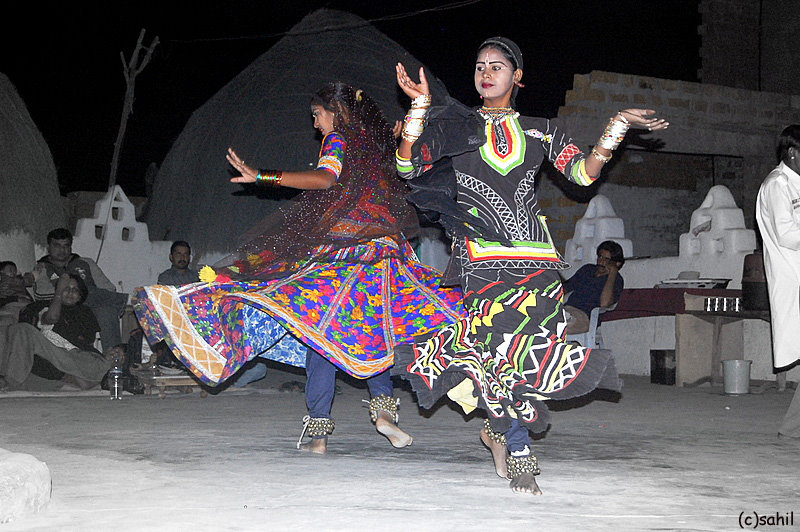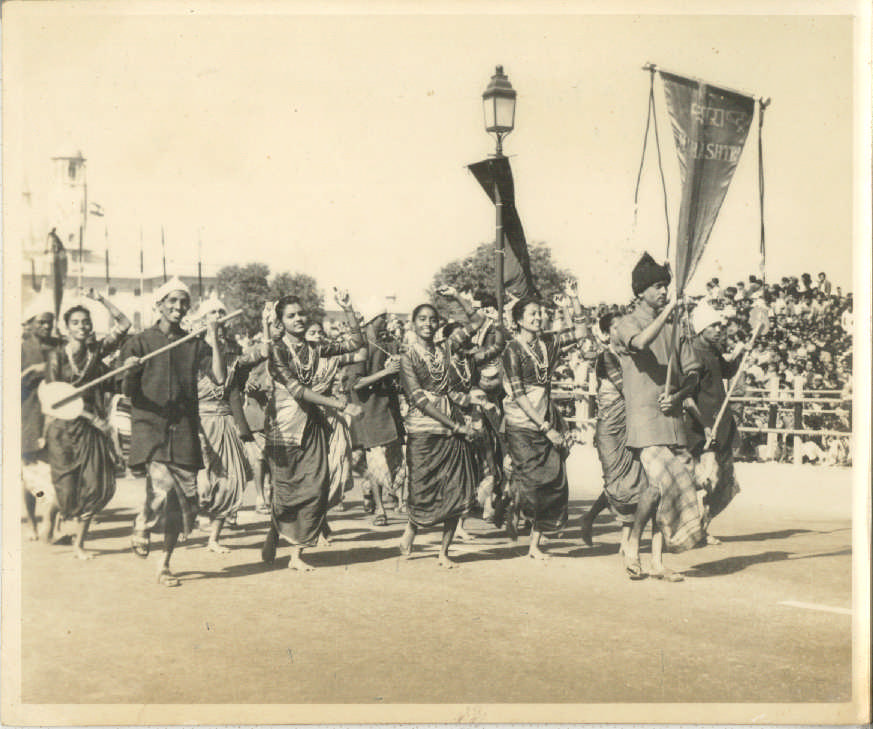|
Sapera
Sapera is a form of dance from India. It is commonly thought of as a snake dance it is a dance that features heavily in the twirls with richly embroidered robes flaying out in display. Sapera is a name given to the snake charmers of India. Since the introduction of the Wildlife Protection Act of 1972 the Sapera's numbers have been dwindling - what was in the thousands is now limited to only a few hundred. Their professions and their religion are slowly being 'phased out' by a law that was put in place to stop the illegal skin/fur trade. Many Sapera practice their trade/snake handling based upon their following of the God Shiva - depicted with a Cobra. Most of the saperas are found to be in Dehradun, Uttarakhand north part of India. But some saperas are also to be found in some parts of Bihar where they doing business from unstable places, moving here and there, and show their talents with 'saanp' snakes and earn some money. See also *Kalbelia The Kalbelia are a snake charmi ... [...More Info...] [...Related Items...] OR: [Wikipedia] [Google] [Baidu] |
Kalbelia
The Kalbelia are a snake charming tribe from the Thar Desert in Rajasthan, India. The dance is an integral part of their culture and performed by men and women. Kalbelia tribe Kalbelias are followers of Sage Kanifnath, who drank a bowl of poison and was blessed with control over venomous snakes and animals. Kalbelias are divided in two main groups, the Daliwal and Mewara. The Kalbelias moved frequently from one place to another in ancient times. Their traditional occupation is catching snakes and trading snake venom. They rear snakes, dogs, hens, horses, donkeys, pigs and goats. Hence, the dance movements and the costumes of their community bear a resemblance to those of the serpents. They are also called Sapera and Jogira, Gattiwala and Poogiwara. The largest cluster of the Kalbelias is in Pali district, followed by significant other groups in Ajmer, Chittorgarh and Udaipur district. They live a nomadic life and belong to the scheduled tribes. Traditionally, Kalbelia men car ... [...More Info...] [...Related Items...] OR: [Wikipedia] [Google] [Baidu] |
Dance In India
Dance in India comprises numerous styles of dances, generally classified as Indian classical dance, classical or Folk dance in India, folk. As with other aspects of Indian culture, different forms of dances originated in different parts of India, developed according to the local traditions and also imbibed elements from other parts of the country. Sangeet Natya Academy, the national academy for performing arts in India, recognizes eight traditional dances as Indian classical dances, while other sources and scholars recognize more. These have roots in the Sanskrit text ''Natya Shastra'',, Quote: "the Natyashastra remains the ultimate authority for any dance form that claims to be 'classical' dance, rather than 'folk' dance". and the Religion, religious performance arts of Hinduism., Quote: Hindu classical dance-forms, like Hindu music, are associated with worship. References to dance and music are found in the vedic literature, (...)"., Quote: All of the dances considered to b ... [...More Info...] [...Related Items...] OR: [Wikipedia] [Google] [Baidu] |
Sapera Caste
The Sapera are a Hindu caste found in North India. They are also known as Barwa Sampheriya in West Bengal, Sapela in Punjab and Sparera in Madhya Pradesh. Origin They are a community of snake charmers and one of a number of semi-nomadic communities found in North India which live in camps at the outskirts of most North Indian towns. In Haryana, the community is known as the Sapera Nath. They are further divided into ten sub-groups, some of which are the Brahmin Sapera, Jhinwar Sapera, Soggar Sapera, BihaL Sapera, Nakphule Sapera, and Sandenath Sapera. These divisions are said to reflect the diverse origin of this community, where people of different caste backgrounds took to the occupation of snake charming, and over time evolved into a distinct community. They now have Scheduled Caste status in Haryana. In Punjab, the word Sapela is derived from the word sap, which means snake in Punjabi. They are also known as Nath. The community are as much snake catchers as snake charmers ... [...More Info...] [...Related Items...] OR: [Wikipedia] [Google] [Baidu] |
Wildlife Protection Act Of 1972
The Wild Life (Protection) Act, 1972 is an Act of the Parliament of India enacted for protection of plants and animal species. Before 1972, India had only five designated national parks. Among other reforms, the Act established scheduled protected plant and hunting certain animal species or harvesting these species was largely outlawed. The Act provides for the protection of wild animals, birds and plants; and for matters connected therewith or ancillary or incidental thereto. It extends to the whole of India. It has six schedules which give varying degrees of protectionSchedule Iand part II oprovide absolute protection - offences under these are prescribed the highest penalties. Species listed ianare also protected, but the penalties are much lower. Animals unde e.g. common crows, fruit bats, rats and mice, are legally considered vermin and may be hunted freely. The specified endemic plants iare prohibited from cultivation and planting. The hunting to the Enforcement autho ... [...More Info...] [...Related Items...] OR: [Wikipedia] [Google] [Baidu] |
Shiva
Shiva (; sa, शिव, lit=The Auspicious One, Śiva ), also known as Mahadeva (; ɐɦaːd̪eːʋɐ, or Hara, is one of the principal deities of Hinduism. He is the Supreme Being in Shaivism, one of the major traditions within Hinduism. Shiva is known as "The Destroyer" within the Trimurti, the Hindu trinity which also includes Brahma and Vishnu. In the Shaivite tradition, Shiva is the Supreme Lord who creates, protects and transforms the universe. In the goddess-oriented Shakta tradition, the Supreme Goddess ( Devi) is regarded as the energy and creative power (Shakti) and the equal complementary partner of Shiva. Shiva is one of the five equivalent deities in Panchayatana puja of the Smarta tradition of Hinduism. Shiva has many aspects, benevolent as well as fearsome. In benevolent aspects, he is depicted as an omniscient Yogi who lives an ascetic life on Mount Kailash as well as a householder with his wife Parvati and his three children, Ganesha, Kartikeya and A ... [...More Info...] [...Related Items...] OR: [Wikipedia] [Google] [Baidu] |
Dehradun, Uttarakhand
Dehradun () is the capital and the most populous city of the Indian state of Uttarakhand. It is the administrative headquarters of the eponymous district and is governed by the Dehradun Municipal Corporation, with the Uttarakhand Legislative Assembly holding its winter sessions in the city as its winter capital. Part of the Garhwal region, and housing the headquarters of its Divisional Commissioner. Dehradun is one of the " Counter Magnets" of the National Capital Region (NCR) being developed as an alternative center of growth to help ease the migration and population explosion in the Delhi metropolitan area and to establish a smart city in the Himalayas. It is the third largest city in the Himalayas after Kathmandu and Srinagar. Dehradun is located in the Doon Valley on the foothills of the Himalayas nestled between Song river, a tributary of Ganga on the east and the Asan river, a tributary of Yamuna on the west. The city is noted for its picturesque landscape and slightly m ... [...More Info...] [...Related Items...] OR: [Wikipedia] [Google] [Baidu] |
Bihar
Bihar (; ) is a state in eastern India. It is the 2nd largest state by population in 2019, 12th largest by area of , and 14th largest by GDP in 2021. Bihar borders Uttar Pradesh to its west, Nepal to the north, the northern part of West Bengal to the east, and with Jharkhand to the south. The Bihar plain is split by the river Ganges, which flows from west to east. On 15 November 2000, southern Bihar was ceded to form the new state of Jharkhand. Only 20% of the population of Bihar lives in urban areas as of 2021. Additionally, almost 58% of Biharis are below the age of 25, giving Bihar the highest proportion of young people of any Indian state. The official languages are Hindi and Urdu, although other languages are common, including Maithili, Magahi, Bhojpuri and other Languages of Bihar. In Ancient and Classical India, the area that is now Bihar was considered the centre of political and cultural power and as a haven of learning. From Magadha arose India's first empire, ... [...More Info...] [...Related Items...] OR: [Wikipedia] [Google] [Baidu] |
Snakes
Snakes are elongated, limbless, carnivorous reptiles of the suborder Serpentes . Like all other squamates, snakes are ectothermic, amniote vertebrates covered in overlapping scales. Many species of snakes have skulls with several more joints than their lizard ancestors, enabling them to swallow prey much larger than their heads (cranial kinesis). To accommodate their narrow bodies, snakes' paired organs (such as kidneys) appear one in front of the other instead of side by side, and most have only one functional lung. Some species retain a pelvic girdle with a pair of vestigial claws on either side of the cloaca. Lizards have evolved elongate bodies without limbs or with greatly reduced limbs about twenty-five times independently via convergent evolution, leading to many lineages of legless lizards. These resemble snakes, but several common groups of legless lizards have eyelids and external ears, which snakes lack, although this rule is not universal (see Amphisbaenia, D ... [...More Info...] [...Related Items...] OR: [Wikipedia] [Google] [Baidu] |
Jogi (caste)
The Jogi (also spelled Jugi or Yogi) is a Hindu community found in North India. Jogi surname is associated with the ancient migrants of the southern Indian states Karnataka, Andhra Pradesh, Tamil Nadu, and Kerala and Gujarat. They are collectively known as ''Nath'', ''Jogi Nath'', ''Jugi Nath'', ''Nath Jogi'', ''Haral, Rawal'' and Rawal Dev Jogi in Gujarat state.People of India Uttar Pradesh Volume XLII Part Two edited by A Hasan & J C Das pages 642 to 646 The word 'Jogi' is derived from the Sanskrit word "yoga", and there is a description of caste and its origin mentioned in Shiva Purana. It is a colloquial term for the word Yogi that refers to the people who practised Yoga as part of their daily rituals. Over time, this led to the formation of this community and subsequent castes. History They are Hindu by religion and have been claimed to have sacred thread on their body. They have been claimed to be descendants of the mendicants of India called Jogi as Sadhus and rishi. ... [...More Info...] [...Related Items...] OR: [Wikipedia] [Google] [Baidu] |
Dances Of India
Dance in India comprises numerous styles of dances, generally classified as classical or folk. As with other aspects of Indian culture, different forms of dances originated in different parts of India, developed according to the local traditions and also imbibed elements from other parts of the country. Sangeet Natya Academy, the national academy for performing arts in India, recognizes eight traditional dances as Indian classical dances, while other sources and scholars recognize more. These have roots in the Sanskrit text '' Natya Shastra'',, Quote: "the Natyashastra remains the ultimate authority for any dance form that claims to be 'classical' dance, rather than 'folk' dance". and the religious performance arts of Hinduism., Quote: Hindu classical dance-forms, like Hindu music, are associated with worship. References to dance and music are found in the vedic literature, (...)"., Quote: All of the dances considered to be part of the Indian classical canon (Bharata Natya ... [...More Info...] [...Related Items...] OR: [Wikipedia] [Google] [Baidu] |





_1_by_N._A._Naseer.jpg)

